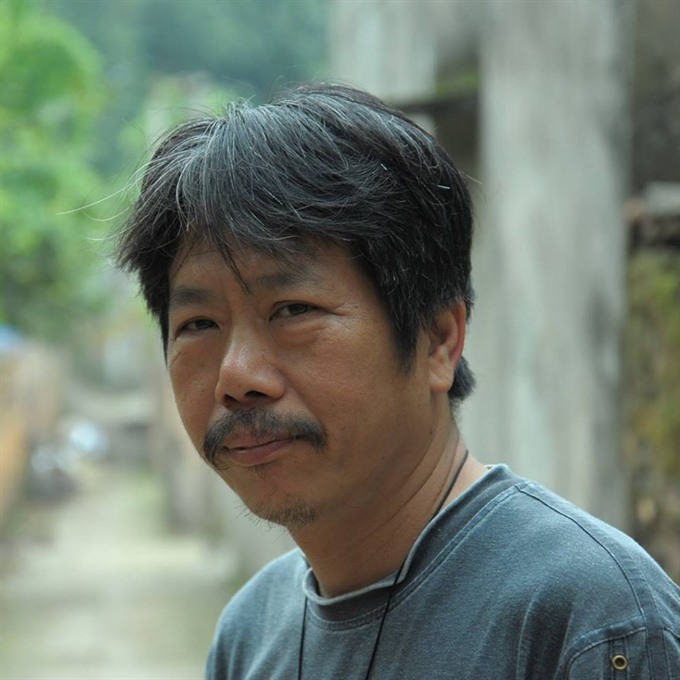 Life & Style
Life & Style

Painter Bùi Hoài Mai is known among domestic artists as an architect and cultural heritage preserver.
 |
| Painter Bùi Hoài Mai |
Painter Bùi Hoài Mai is known among domestic artists as an architect and cultural heritage preserver. Beside designing resorts like the Emeralda Resort in the northern province of Ninh Bình, Long Beach Resort on Phú Quốc Island, and Bãi Đá Nhảy Resort in the central province of Quảng Bình, he has made over an entire village near Hội An City in the central province of Quảng Nam.
Nearly 20 years ago, Mai visited Na Village in the northern province of Bắc Ninh to seek inspiration for his art. He fell in love with the green leafy village surrounded by hills and fields and decided to build his painting worskshop there. He also plans to turn the village into a tourism hub.
He shares his ideas with Culture Vulture:
What’s your plan for the village?
After nearly 20 years living the village, I found many things that should be done to improve residents’ living standards, preserve traditional culture and develop tourism in the area.
My idea is to develop everything based on the existing village. I wouldn’t change anything. I will just suggest the way to re-organise the space and introduce new services.
Everyone wants change but when people understand the value of tradition and roots, they will join in the preservation process voluntarily.
What do you hope for the future of Na Village?
I hope the village will attract tourists. But that’s only a by-product. The most important thing is that the villagers can make a living with sustainable jobs, not just in tourism.
I have introduced ceramic making to the village. If no customers buy our products in the village, I can sell them in Hà Nội. My ceramic workshop employs 10 local workers.
I am planning to restore giấy dó (poonah paper) making. There is a nearby village called Đống Cao where people used to make poonah paper. Yet now the Đống Cao villagers produce toilet paper, which has resulted in pollution in the Ngũ Huyện Khê River.
A sheet of poonah paper is worth the same as 100 rolls of toilet paper. But no one guided the local residents and connected them with customers.
I had not plan to do that before, but since living in the village I found many things that need fixing. I was determined to change what I can, which will be good for myself and others.
I plan to invite elder poonah makers from Đống Cao to teach young people in Na Village.
I have found that local fruit like quả trám (diamond-shaped lattice truss) and quả sấu (Dracontomelon) can be canned and sold. I will guide local people to do this and increase their income.
Local farmers tend to see successful models to follow. I plan to develop ecological tourism in the area and have persuaded some of my friends from Hà Nội to invest in homestay services. A group of tourists from Germany visited the village a few months ago. They liked the scenery and our tour programme, which included a demonstration of how to make a tile-roof Vietnamese house. Several companies have asked me about the tour as a new tourism product.
Do you think you will go down in history as the initiator of ceramics in the village?
There is enormous development in villages. Not every good thing we bring yields good results. When I first moved my museum of ancient ceramics to the village, someone burned my two houses. Change is not simple, but these are good challenges. Obstacles force us to overcome challenges and advantages sometimes kill us.
Could you tell me about your pagoda initiative?
I’m not a Buddhist, but I research Buddhism. I sold two paintings of the village. I set aside part of the money for my children, and the rest for rebuilding a local pagoda that was destroyed during the war. Local residents have also donated a lot.
What’s your principle in architecture?
I like the French’s way to combine Western with Vietnamese designs to produce classical architecture. A culture without an exchange of ideas is a dead culture. I don’t think conservation is a good way. The French people brought their culture here and were influenced by our culture. If we don’t renew ourselves, we will die. If we know how to integrate other cultures and make them ours, our culture will be richer. French-style buildings in Hà Nội now belong to us. They are a part of our memory.
Could you tell me about your plan for a "quan họ" (love duet) singing class for domestic and foreign visitors to the village?
Na Village is an ancient village where quan họ (folk duet) originated in the northern province of Bắc Ninh. I have encouraged old singers to gather regularly and perform their songs for the youngsters. Last year, I invited noted folk singers like Thanh Hoài and Xuân Hoạch to visit the village and perform with local singers. After the performance, local singers were more confident and have since spared no effort to find lost tunes to sing. I will encourgage them to teach folk singers from Hà Nội, then local residents, then any tourists who wish to learn. — VNS




